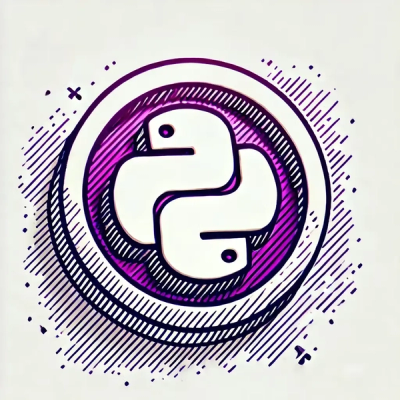
Security News
PEP 810 Proposes Explicit Lazy Imports for Python 3.15
An opt-in lazy import keyword aims to speed up Python startups, especially CLIs, without the ecosystem-wide risks that sank PEP 690.
@oruga-ui/oruga-next
Advanced tools
Oruga UI is like a caterpillar, minimal and yet functional. It's in your hands turning it into a butterfly
(🐛) => 🦋
Oruga is a lightweight UI components library for Vue.js without any dependency. It offers a set of easily customisable components and doesn't depend on any specific style or CSS framework (like Bootstrap, Bulma, TailwindCSS, etc...). Therefore, it doesn't provide a grid system or CSS utilities, but you can integrate any CSS framework you like. Oruga provides you with a set of functional components, so you can focus only on the UI/UX aspects of your application and can be entirely flexible for future changes without having to touch a line of JavaScript.
If you need a component library and want to easily apply your custom styles, Oruga is the library for you! 🐛
In addition, if you don't want to style everything yourself, we've created several themes to provide you with a variety of ready-to-use styles. 🦋
Browse online documentation here.
💅 For more info about components customization, read carefully the "customization" section in the documentation.
🕹 To see Oruga in action, go to the "example" section in the documentation.
Note: the source code of the documentation examples can be found in the
examplesdirectories for each component, it serves as the demo as well.
🐛 Oruga is available for Vue.js version 3.x
npm install @oruga-ui/oruga-next
To get started quickly, use Oruga to register all components:
import { createApp } from 'vue'
import Oruga from '@oruga-ui/oruga-next';
createApp(...).use(Oruga);
To use tree shaking, either register component manually:
import { createApp } from 'vue'
import { OField, OInput } from '@oruga-ui/oruga'
createApp(...)
.use(OField)
.use(OInput)
Oruga's superpower is its configurability and its CSS framework agnostic approach. Each component can be individually customised and configured by defining specific classes using a class-mapping approach. Therefore, Oruga comes without any styling by default. However, there are several official predefined configurations called themes, which you can include and extend to give your application a individual look and feel. And all components came with predefined classes by default.
Please read the "configuration" section in Oruga documentation.
If you want to see an example with a fully customized registration form using Tailwind, Bulma, Bootstrap, Material or any other CSS framework have a look at the official Oruga multiframework example (source code available here) or if you're more familiar with TailwindCSS 2 give our official TailwindCSS Demo a try (source code here)
Oruga doesn't provide a Nuxt.js module at the moment.
You can use Nuxt.js plugins system adding a file (e.g. oruga.js) in your plugins folder containing:
import Oruga from "@oruga-ui/oruga-next";
export default defineNuxtPlugin((nuxtApp) => {
nuxtApp.vueApp.use(Oruga);
});
To make this plugin available in your app, add this file to the plugins array in your nuxt.config.js
plugins: [{ src: "~plugins/oruga.js" }];
To understand how the plugins work with Nuxt.js, take a look at the NuxtJS plugin documentation.
Please see the contributing guidelines.
➜ Join the Oruga Discord server.
Oruga uses Semantic Versioning 2.0.0 for package versions.
While it's still in beta, versions will follow this pattern: v0.Y.Z, where:
Walter Tommasi | Andrea Stagi | Marcel Moravek |
Thank you to everyone involved for improving this project, day by day 💚
Oruga logo designed by Matteo Guadagnini
Oruga svg images for Checkbox and Radio components and Holidays assets created by Fabrizio Masini

Code released under MIT license.
0.11.6 (2025-09-03)
variantClass and message messageSizeClass (#1397) (7b18096)position prop to repleace order prop (#1393) (606bc27)filterable prop to replace searchable prop (#1379) (63795a1)ComponentClass to accept an array with mixed string and object values (#1378) (14fccc0)FAQs
UI components for Vue.js and CSS framework agnostic
The npm package @oruga-ui/oruga-next receives a total of 6,261 weekly downloads. As such, @oruga-ui/oruga-next popularity was classified as popular.
We found that @oruga-ui/oruga-next demonstrated a healthy version release cadence and project activity because the last version was released less than a year ago. It has 3 open source maintainers collaborating on the project.
Did you know?

Socket for GitHub automatically highlights issues in each pull request and monitors the health of all your open source dependencies. Discover the contents of your packages and block harmful activity before you install or update your dependencies.

Security News
An opt-in lazy import keyword aims to speed up Python startups, especially CLIs, without the ecosystem-wide risks that sank PEP 690.

Security News
Socket CEO Feross Aboukhadijeh discusses the recent npm supply chain attacks on PodRocket, covering novel attack vectors and how developers can protect themselves.

Security News
Maintainers back GitHub’s npm security overhaul but raise concerns about CI/CD workflows, enterprise support, and token management.